How to Stop My Dog from Barking When Walking Outside?
Urgh….there is nothing more annoying than a dog that is incessantly yapping while going on its daily walks. After all, the walk is probably the highlight of your dog’s day!
Not only does it provide them with the much-needed physical activity and mental stimulation, but it is also a welcomed break from the humdrum of staying indoors all day.
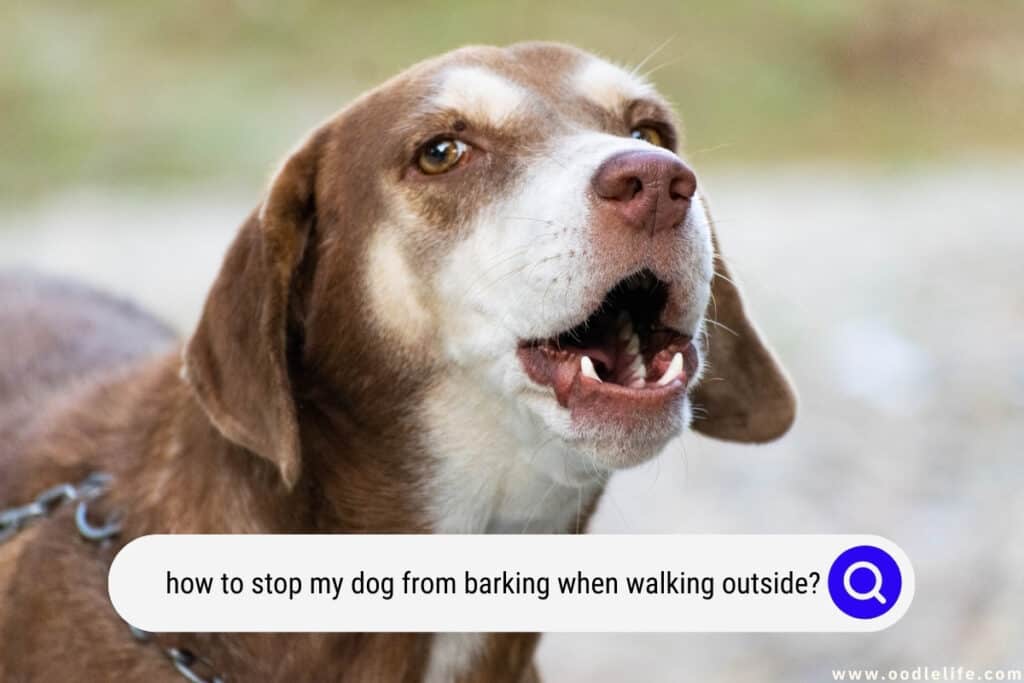
However, if your dog is barking throughout the walk, nothing could be more than a buzzkill. Not only is it annoying, but it can also be downright inconvenient.
Don’t worry. More often than not, a dog’s barking is merely an indicator of something else that is going on. Dogs hear and smell way better than us, and it could be something that we are unaware of.
In this blog post, we’ll look at the various reasons why your dog could be barking its head off during your walk, and what to do about it.
Why Does Your Dog Bark?
To fix the problem, we first have to understand what the problem is. If you zero in on what is causing your dog to bark in the first place, then you can take the appropriate steps to address the problem at its source.
1. Frustration
If your dog is frustrated because he’s on a leash or somehow confined, he might be barking his head off to protest at being restricted. This frequently happens in unsocialized puppies who have yet to learn impulse control and how to walk nicely on a leash.
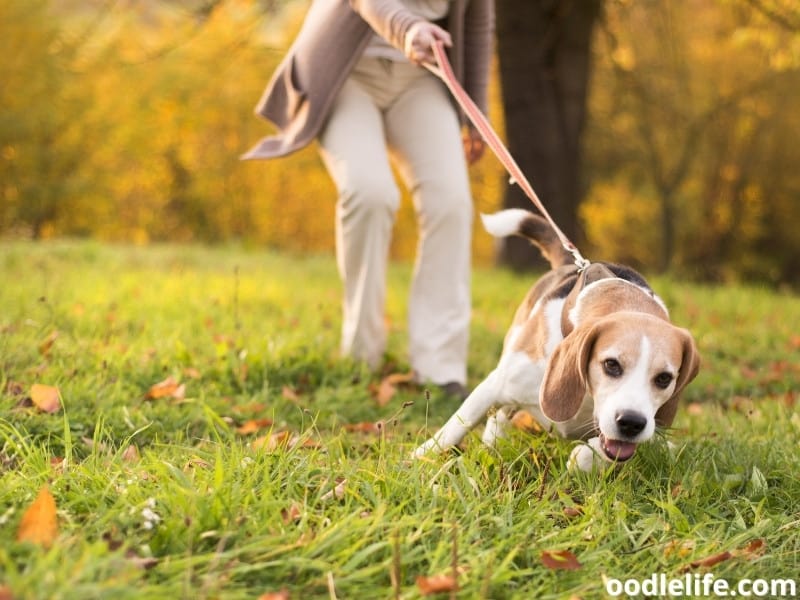
Some dogs don’t like being tied by a leash. When they are restrained by a leash, they may exhibit signs of fear or aggression. Because they can’t escape and do whatever they want when they’re on a leash, they perceive it as a threat and will bark.
2. Fearful or Anxious
Some insecure pups or dogs might bark at other animals to warn them away because they are afraid of strange dogs or people. In these instances, your dog might try to put as much distance as he can between himself and the other scary person or dog. That’s why socializing your dog at a young age is oh-so-important.
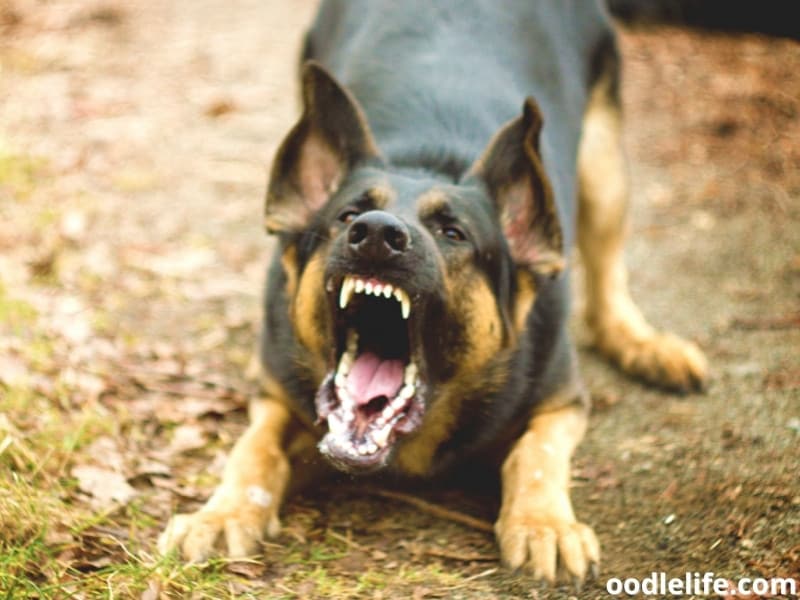
3. To Attract Attention
Dogs, like humans, might want attention every now and then. They might be barking because they crave your attention and want interaction. Alternatively, they might just want a treat!
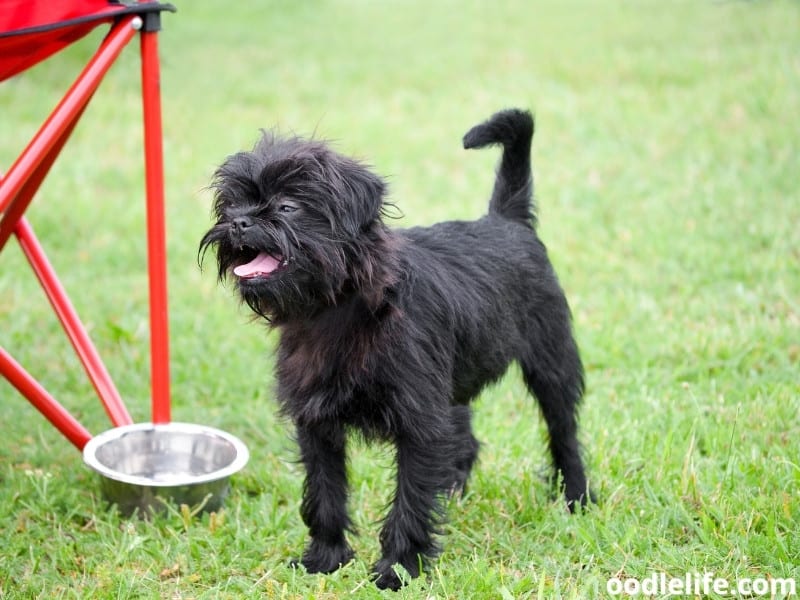
4. They Sense Something You Don’t
If your dog is facing away from you and not barking at you, it doesn’t want something from you. It probably smells or hears something that you don’t. Dogs have hearing that is four times better than ours, and an incredible sense of smell that is thousands of times better.
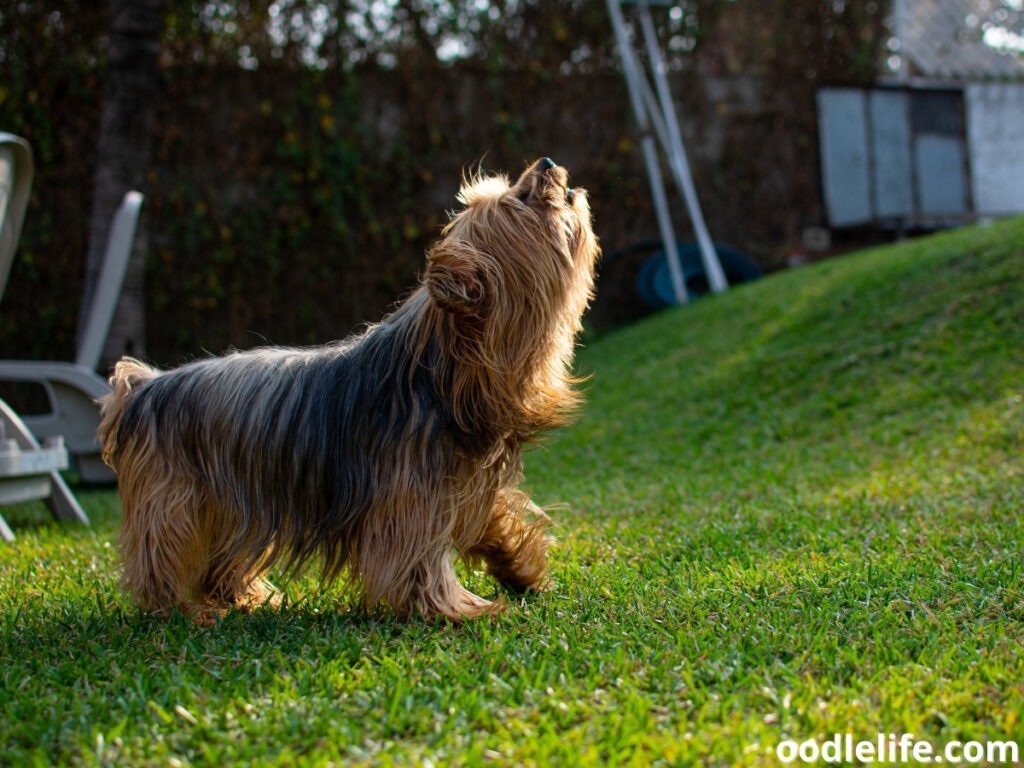
They might be hearing or smelling something strange and barking to alert you on something amiss. Definitely go check it out.
Ways To Reduce Barking While On A Walk
Once you’ve identified the triggers, then you can do something about them. If the trigger is that it is something amiss that doesn’t happen too often, then simply ignore it, and it should pass.
However, if your dog is barking endlessly on a walk at strangers, other dogs, or simply at anything that moves, the problem at its core is the lack of socialization. Your dog is not exposed to many stimuli, so every time he encounters a new and scary situation, he barks his head off.
1. Socialize Your Dog More
Socialization is of utmost importance to a dog’s happiness (and yours!). A well-socialized dog is a balanced, happy dog that is likely to be unfazed by anything.

Socializing a dog means exposing them to a variety of people, animals, and environments in a positive way so they learn to interact confidently and appropriately. It’s important to do this early on in a puppy’s life before they form any negative associations.
The process of socialization can be continued throughout a dog’s life, and it’s never too late to start. Dogs who receive proper socialization are less likely to be afraid or anxious in new situations and are more likely to be well-rounded, happy companions.
There are several important things to keep in mind when socializing your dog. First, it’s important to start early. Puppies are especially receptive to socialization during the first three months of life.
During this time, they should be exposed to as many different people, animals, and environments as possible.
Second, socialization should be a positive experience for your dog. Make sure to use positive reinforcement such as treats and praise to help your dog associate social situations with something positive. Finally, don’t force your dog into situations that make him uncomfortable.
If he seems scared or hesitant, slowly introduce him to the situation and let him approach at his own pace. With a little patience and effort, you can help your dog become a well-rounded and confident canine companion.
2. Train at Home
Walk your dog at home, where he is in a familiar environment and more confident. You can walk your dog on a leash and reward him with treats when he is quiet and calm. When he starts to get anxious or barky, stop and ignore the behavior until he calms down again.
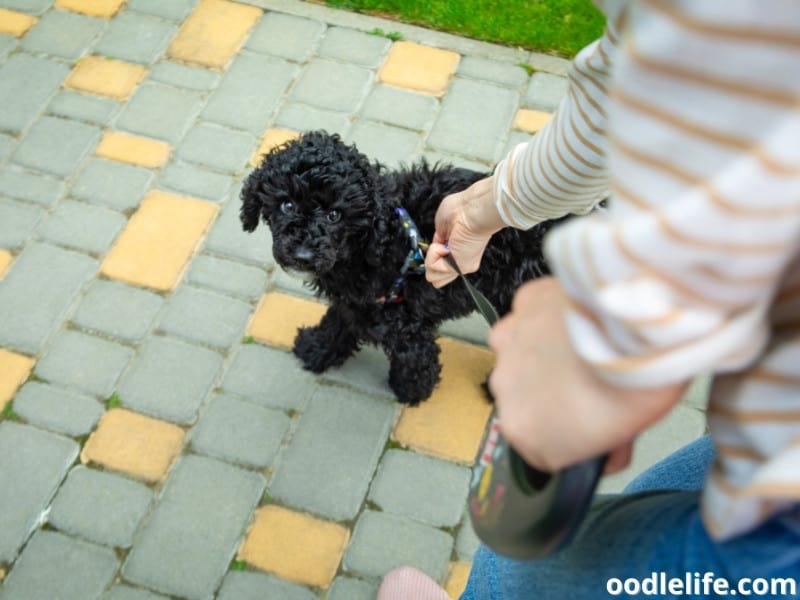
Then treat and resume your walk.
Your dog will need to learn that going for a walk is only allowed when they are calm and obedient. This requires persistence, effort, and patience.
3. Teach Some Basic Commands
Teach your dog to respond to commands such as quiet, heel, or leave it. Allow three or four barks before stating “quiet” in a steady tone. When he obeys and quits yapping, treat or reward him immediately, then resume your walk.
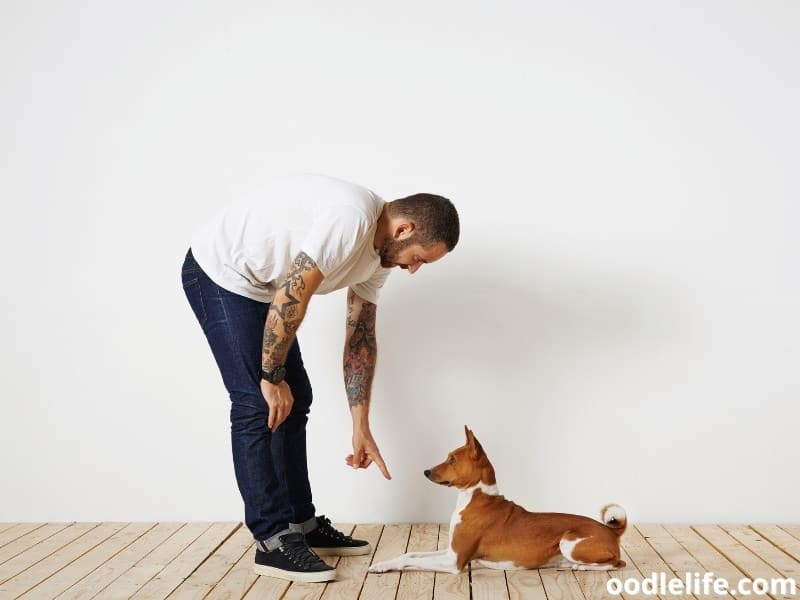
4. Distract Your Dog
If your dog doesn’t have a deeper unlying behavioral issue such as a lack of socialization, you can simply defuse the situation by distracting your dog. Divert your dog’s attention elsewhere before he has the opportunity to react by barking, and offer him snacks or toys.
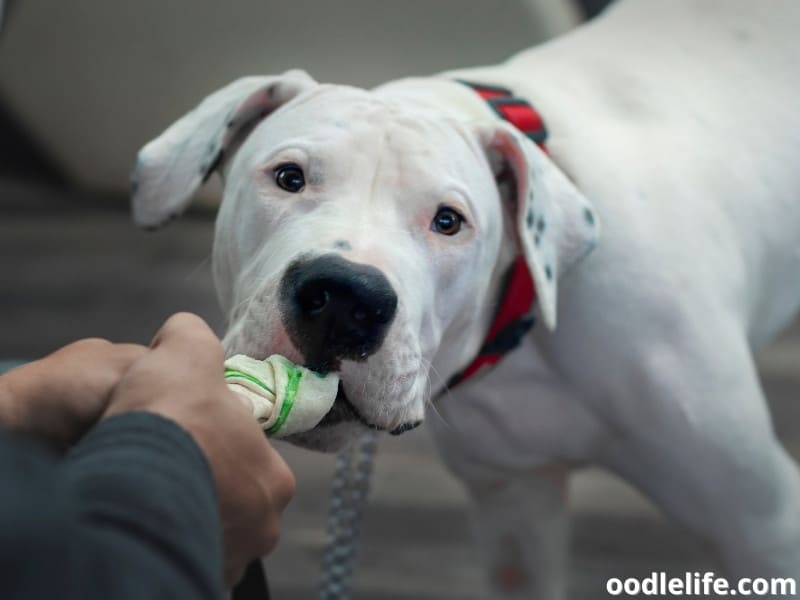
Make sure you do this before your dog reacts, or you will essentially be rewarding him for reacting. If your dog is preoccupied, he might ignore the human or trigger for his barking, and gradually come to understand that strangers aren’t dangerous.
5. Allow Your Dog Off-Leash
If you have opportunities to allow your dog off-leash, romping around with his other canine buddies is likely to leave him happily tired, and too exhausted to bark! Many dogs get frustrated with constantly being on the leash, so allowing them some off-leash play might be enough to get rid of all that pent-up energy.
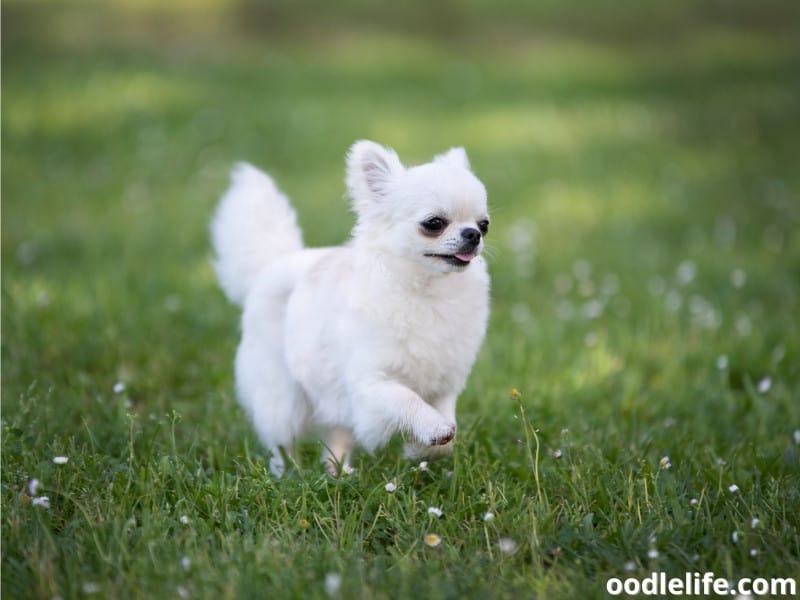
If you have access to a securely enclosed area, let your dog off the leash every day, especially while out for a walk. If not, play with him indoors with toys or engage in a tug of war to burn off extra energy.
6. Increase Exercise
Some dogs might bark out of frustration or boredom which is usually an indication of being understimulated both mentally and physically. If you can up their exercise, they’ll be too tired to be frustrated or bored!

And, of course, getting out and about is great for their mental health, helping to reduce stress and anxiety levels, making them less likely to bark incessantly at something that is a trigger.
In addition, a solid exercise routine can help to keep your dog at a healthy weight, improve their cardiovascular health, and even reduce their risk of developing certain types of cancer. In addition, exercise can help to improve your dog’s joint health and increase their flexibility.
7. Avoid Over-Stimulating Environments
If you have a particularly nervous dog, avoid walking your dog around an environment that is overly stimulating, like a busy city sidewalk or crowded park with loads of people and cars. Although this is a prime socialization opportunity for your dog, some dogs might not be up for it yet.
![Why does my dog walk and poop? [Answers]](https://www.oodlelife.com/wp-content/uploads/2022/04/walking-labrador-retriever-1024x768.jpg)
Try going on a peaceful nature trail instead and choose less crowded settings. Avoid the busiest times of the day like the mornings and evenings if crowds make them nervous.
Final Thoughts
If your dog is barking during your daily walks, the first thing you can do is identify what the trigger is. If it is an isolated incident and your dog doesn’t frequently do it, you can probably ignore the behavior which will soon pass once the stimulant disappears.
What you shouldn’t do is shout at your dog during your walk or pull on his collar, which can lead to more fear and anxiety, exacerbating the situation and giving your dog the idea that going on a walk is a bad thing.
However, if your dog continuously and incessantly barks, it is more often than not due to a lack of socialization. Expose your dog to as many situations as possible, slowly working your way up into the truly scary ones like a busy sidewalk in the downtown area or a crowded mall.
However, always go slow and don’t force your dog into an uncomfortable situation too soon. With some patience and hard work, you can have a non-barky, balanced dog!